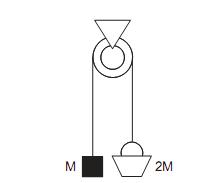Questões de Concurso
Comentadas para geofísico júnior - geologia
Foram encontradas 201 questões
Resolva questões gratuitamente!
Junte-se a mais de 4 milhões de concurseiros!
I - A sedimentação em ambiente continental é comum nas bacias intracratônicas.
II - A sedimentação marinha rasa é comum nas bacias intracratônicas.
III - As bacias intracratônicas caracterizam-se por apresentar sedimentação em oceano profundo.
IV - As bacias intracratônicas apresentam intenso tectonismo sinsedimentar.
Está correto o que se afirma em
Gerald Herbert
With crude still hemorrhaging into the Gulf of Mexico, deep-water drilling might seem taboo just now. In fact, extreme oil will likely be the new normal. Despite the gulf tragedy, the quest for oil and gas in the most difficult places on the planet is just getting underway. Prospecting proceeds apace in the ultradeepwater reserves off the coasts of Ghana and Nigeria, the sulfur-laden depths of the Black Sea, and the tar sands of Venezuela’s Orinoco Basin. Brazil’s Petrobras, which already controls a quarter of global deepwater operations, is just starting to plumb its 9 to 15 billion barrels of proven reserves buried some four miles below the Atlantic. The reason is simple: after a century and a half of breakneck oil prospecting, the easy stuff is history. Blistering growth in emerging nations has turned the power grid upside down. India and China will consume 28 percent of global energy by 2030, triple the juice they required in 1990. China is set to overtake the U.S. in energy consumption by 2014. And now that the Great Recession is easing, the earth’s hoard of conventional oil is waning even faster. The International Energy Agency reckons the world will need to find 65 million additional barrels a day by 2030. If the U.S. offshore-drilling moratorium drags on, look for idled rigs heading to other shores. Available in: Retrieved on: June 19, 2011.
Gerald Herbert
With crude still hemorrhaging into the Gulf of Mexico, deep-water drilling might seem taboo just now. In fact, extreme oil will likely be the new normal. Despite the gulf tragedy, the quest for oil and gas in the most difficult places on the planet is just getting underway. Prospecting proceeds apace in the ultradeepwater reserves off the coasts of Ghana and Nigeria, the sulfur-laden depths of the Black Sea, and the tar sands of Venezuela’s Orinoco Basin. Brazil’s Petrobras, which already controls a quarter of global deepwater operations, is just starting to plumb its 9 to 15 billion barrels of proven reserves buried some four miles below the Atlantic. The reason is simple: after a century and a half of breakneck oil prospecting, the easy stuff is history. Blistering growth in emerging nations has turned the power grid upside down. India and China will consume 28 percent of global energy by 2030, triple the juice they required in 1990. China is set to overtake the U.S. in energy consumption by 2014. And now that the Great Recession is easing, the earth’s hoard of conventional oil is waning even faster. The International Energy Agency reckons the world will need to find 65 million additional barrels a day by 2030. If the U.S. offshore-drilling moratorium drags on, look for idled rigs heading to other shores. Available in: Retrieved on: June 19, 2011.
I – Sua unidade estratigráfica formal fundamental é a Parassequência.
II – Envolve conceitos, métodos/técnicas de correlação e mapeamento estratigráfico dentro de um arcabouço cronoestratigráfico.
III – Tem seu uso restrito a bacias de margem continental passiva, com uso de diagrafias sísmicas e perfis geofísicos de poços.
IV – O Trato de Sistemas de Mar Baixo (TSMB) é limitado, na base, pela superfície limite de sequências deposicionais (LS).
Está correto APENAS o que se afirma em
I – Ooides II – Wackestone III – Peloides IV – Oosparito V – Boundstone
P – Rocha carbonática cujos componentes originais foram organicamente agregados.
Q – Grãos subesféricos a elongados formados por calcita microcristralina, cuja origem pode serfecal.
R – Rocha carbonática contendo, ao menos, 25% de ooides e, no máximo, 25% de intraclastos, com cimento mais abundante que a matriz.
S – Rocha carbonática sustentada pelos grãos, contendo mais de 5% de lama.
T – Grãos esféricos a subesféricos, com diâmetro igual ou inferior a 2,0 mm, de origem inorgânica.
U – Rocha carbonática contendo, ao menos, 25% de ooides e, no máximo, 25% de intraclastos com matriz mais abundante que o cimento.
W – Rocha carbonática sustentada por lama, contendo mais de 10% de grãos
X – Grãos esféricos a subesféricos, com diâmetro igual ou inferior a 2,0 mm, de origem orgânica.
I – Ordoviciano
II – Triássico/Jurássico
III – Cretáceo
V – Paleógeno (Oligoceno)
Está(ão) correta(s) APENAS

Dois corpos de massas M e 2M estão inicialmente em repouso e suspensos por um fio inextensível e de massa desprezível, conforme a figura acima. A polia fixa também é ideal e de massa desprezível, e a aceleração gravitacional local é de intensidade g. Decorrido um intervalo de tempo t, desde o início do movimento destes corpos, a soma dos módulos de seus deslocamentos verticais é igual a
